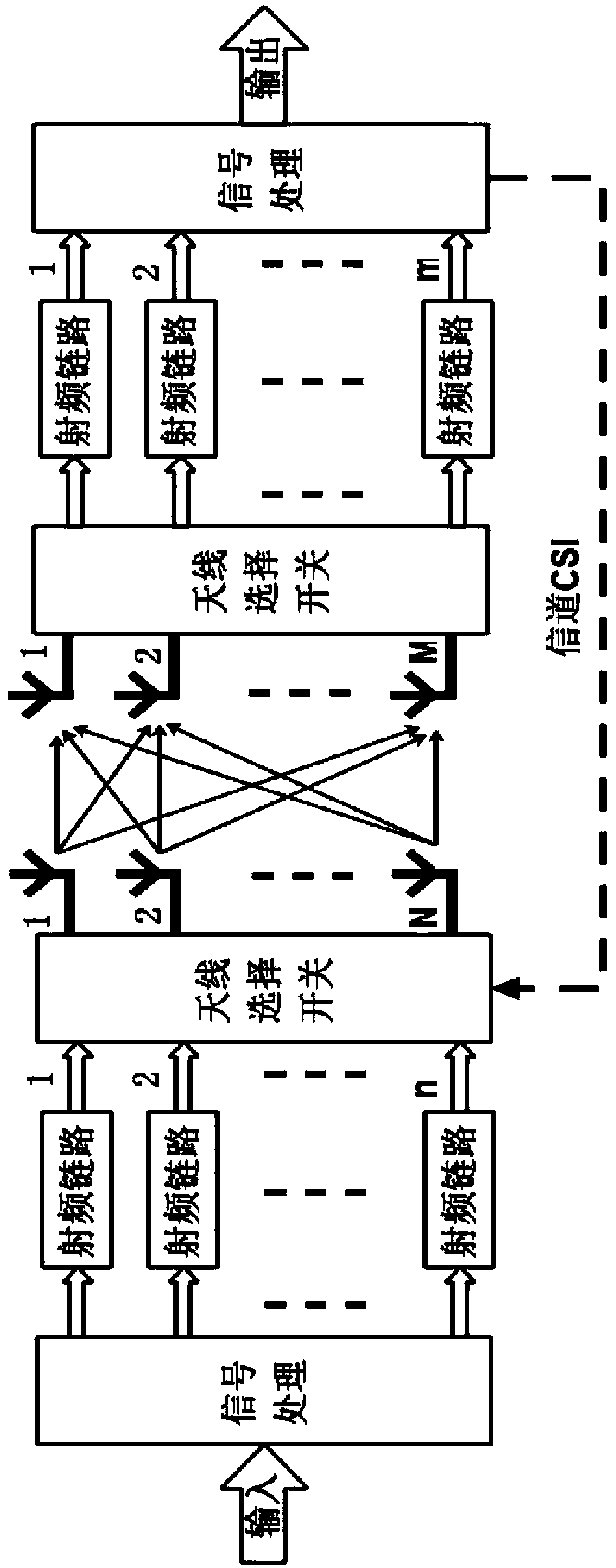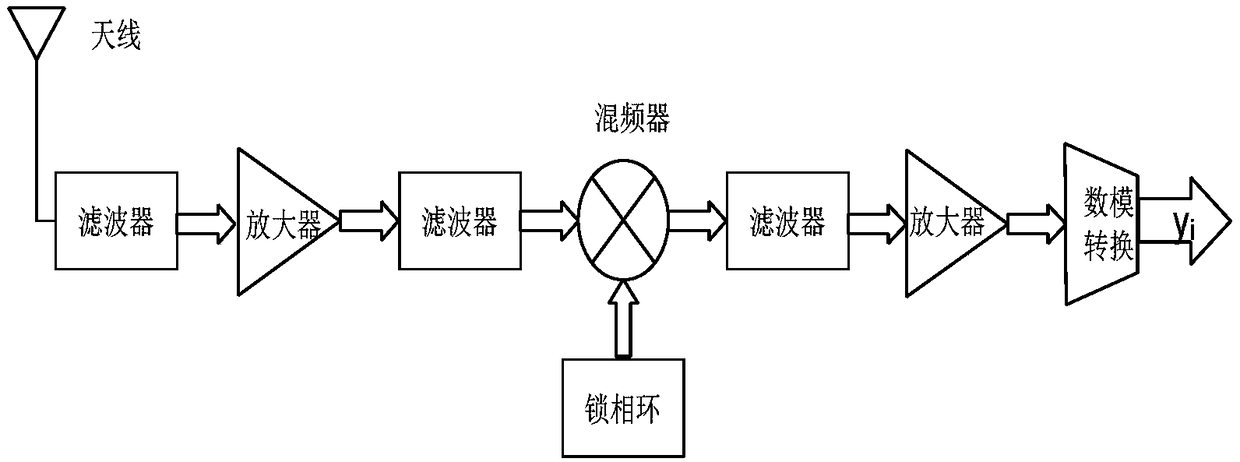Antenna selection method for large-scale MIMO system
An antenna selection, large-scale technology, applied in transmission systems, radio transmission systems, diversity/multi-antenna systems, etc., can solve the problem of not fully applicable to massive MIMO systems, little contribution to system capacity improvement, and exhaustive search algorithm complexity Reduce and other problems to achieve the effect of meeting green communication requirements, reducing hardware costs, and reducing implementation complexity
- Summary
- Abstract
- Description
- Claims
- Application Information
AI Technical Summary
Problems solved by technology
Method used
Image
Examples
Embodiment Construction
[0031] The technical solutions in the embodiments of the present invention will be clearly and completely described below. Obviously, the described embodiments are only a part of the embodiments of the present invention, rather than all embodiments. Based on the embodiments of the present invention, those skilled in the art All other embodiments obtained by personnel without creative work belong to the protection scope of the present invention.
[0032] The present invention will be further described below in conjunction with specific embodiment and accompanying drawing:
[0033] An embodiment of the present invention provides a method for selecting an antenna in a massive MIMO system, comprising the following steps:
[0034] Step 1. Initialize two empty antenna selection subsets S={} and T={};
[0035] Step 2. Calculate the norm of each column in the massive MIMO channel matrix H, and the column h with the largest norm f Put it into the antenna selection subset S as the ref...
PUM
 Login to View More
Login to View More Abstract
Description
Claims
Application Information
 Login to View More
Login to View More - R&D
- Intellectual Property
- Life Sciences
- Materials
- Tech Scout
- Unparalleled Data Quality
- Higher Quality Content
- 60% Fewer Hallucinations
Browse by: Latest US Patents, China's latest patents, Technical Efficacy Thesaurus, Application Domain, Technology Topic, Popular Technical Reports.
© 2025 PatSnap. All rights reserved.Legal|Privacy policy|Modern Slavery Act Transparency Statement|Sitemap|About US| Contact US: help@patsnap.com



